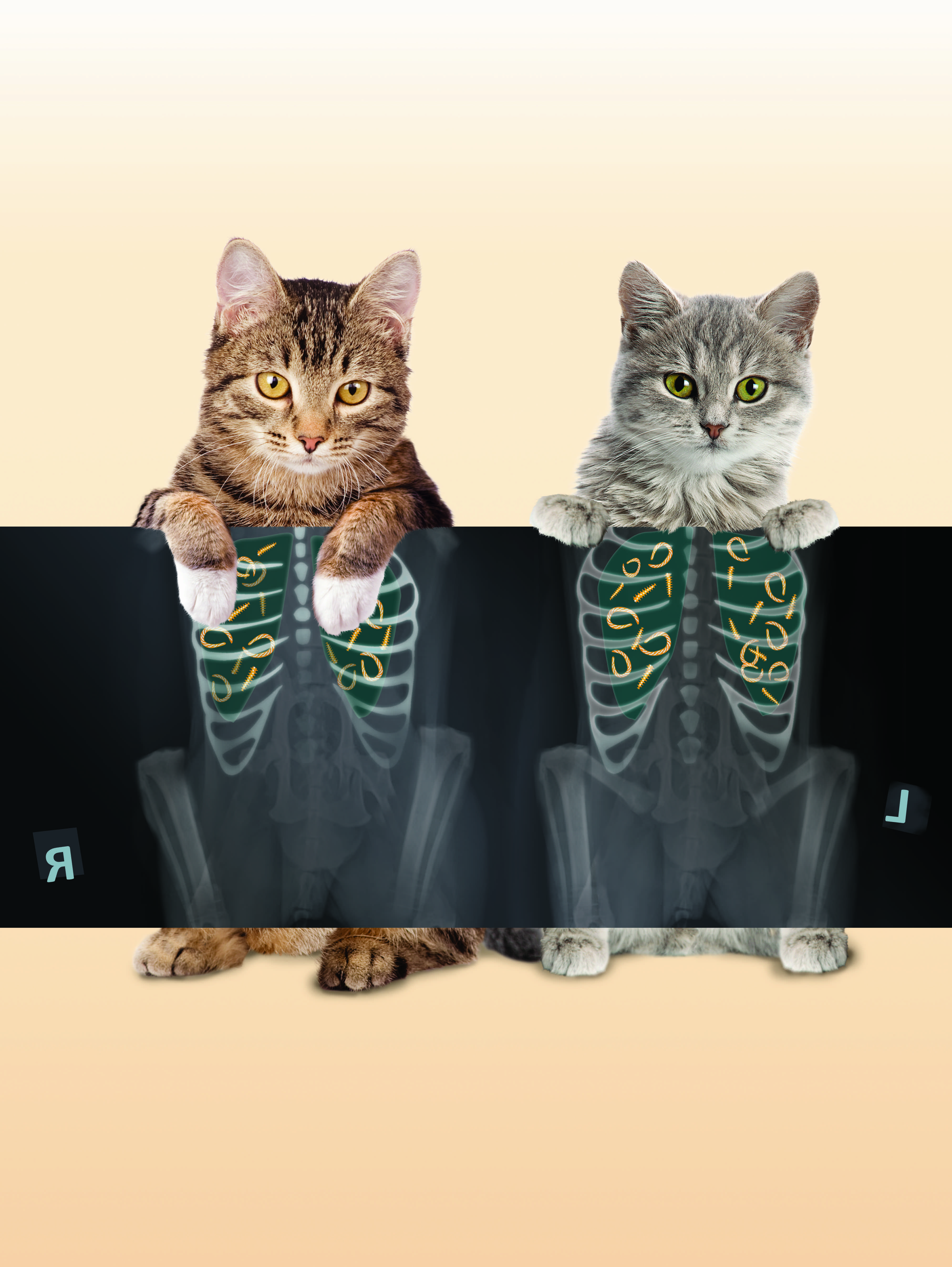Yes, cats can get lungworms, which can be dangerous and even fatal if left untreated. Lungworm infection in cats is caused by a parasitic worm, aelurostrongylus abstrusus, and is more commonly found in outdoor cats who hunt or eat rodents.
Symptoms can vary but may include coughing, wheezing, and difficulty breathing. Treatment typically involves medication to kill the worms and alleviate symptoms. It is important to regularly deworm cats and keep them away from potential sources of infection to prevent lungworm and other parasitic infections. If you suspect your cat has lungworm or any other health concerns, it is recommended to consult a veterinarian for proper diagnosis and treatment.

Credit: grownups.co.nz
Introduction
Lungworm, also known as angiostrongylus vasorum, is a type of parasitic roundworm that can cause lung damage and other health problems in animals. It can affect dogs, foxes, and even hedgehogs, but can cats really get it too? It’s important to know the answer to this question since lungworm can have serious consequences for our feline friends.
In this article, we’ll cover everything you need to know about lungworm in cats. From the symptoms to the diagnosis and treatment of the disease, we’ll give you all the information you need to keep your cat healthy and happy.
So, let’s dive into the world of lungworm and see if our cats can really get it.
Understanding Lungworm
Lungworm is a common parasite that affects cats. It’s mainly transmitted through ingesting contaminated prey or through contact with feces from infected animals. There are different types of lungworms that can cause respiratory problems, coughing, weight loss, and even death in severe cases.
When lungworm larvae are ingested, they migrate to the lungs where they mature and lay eggs. The eggs are then coughed up and swallowed, passing out in the feces and continuing the cycle. Cats with lungworm may also show signs of lethargy and a decrease in appetite, which can lead to malnutrition.
Regular deworming and avoiding contact with infected rodents can help prevent lungworm infestations in cats.
The Advantage Family: Lungworm in Cats, signs, consequences, and solution
The Prevalence Of Lungworm In Cats
Lungworm is a common parasitic infection in cats caused by adult worms. Yes, cats are at risk of lungworm infection, particularly those that hunt and eat rodents. It’s prevalent in areas with warm and humid climates, especially in wetlands and low-lying areas.
According to statistics, the number of cats infected has been increasing in recent years. The symptoms of lungworm infection may vary from one cat to another but look for signs of coughing, breathing difficulties, lethargy, and loss of appetite. Early diagnosis is key to effective treatment.
Regular check-ups and deworming are essential to prevent lungworm infections. Educate yourself about the risks and take preventative measures to keep your feline friend safe and healthy.
Signs And Symptoms Of Lungworm In Cats
Lungworms are a type of parasitic worm that primarily affect cats that hunt or eat infected prey. The symptoms of lungworm in cats can vary, but common signs include coughing, lethargy, and difficulty breathing. It can often be challenging to know if your cat has lungworm, and in many cases, the symptoms may be mistaken for other conditions.
Complications of lungworm in cats can include respiratory distress, pneumonia, and, in severe cases, death. If you suspect your cat has lungworm, it’s essential to seek medical attention from a veterinarian as soon as possible. Treatment typically involves prescription medication and supportive care, including oxygen therapy and fluid therapy.
Early intervention can be crucial in successfully managing lungworm in cats, so be sure to keep a watchful eye on your furry friend and seek veterinary advice at the first sign of any concerning symptoms.
Diagnosis And Treatment
Lungworm is a disease that cats can contract from eating infected rodents, birds, or snails. To diagnose the disease in cats, veterinarians may use a combination of blood tests, x-rays, and fecal examinations. Treatment usually involves medication to eliminate adult worms, as well as supportive care to manage symptoms.
Prevention is key, and cat owners can reduce their pet’s risk of contracting lungworm by controlling their cat’s outdoor activities, avoiding letting them eat wild prey, and keeping their environment clean. Overall, early diagnosis and treatment are crucial to successful management of lungworm in cats.
Conclusion
Lungworm is a serious condition that affects cats. It’s crucial to provide proactive care and regular checkups to catch the disease early. Doing so can make a significant difference in fighting back against the illness. Lungworm has a severe impact on both cats and their owners.
It’s essential to consider the cost and emotional toll it can take. Cat owners must remain vigilant and informed about lungworm to maintain their pet’s health and well-being. By keeping these key points in mind, everyone can work together to fight against this dangerous disease.
Frequently Asked Questions For Do Cats Get Lungworm
Conclusion
Based on the information gathered, it is clear that cats can get lungworm, and it is more common than many cat owners may realize. While most infected cats won’t show any symptoms, the potential health risks include respiratory issues, coughing, and difficulty breathing.
Preventative measures, such as keeping cats indoors and avoiding exposure to infected snails and slugs, are key to reducing the likelihood of infection. Routine check-ups with a veterinarian and testing for lungworm can also help catch any potential infections early on.
It’s important for cat owners to stay informed and vigilant when it comes to their pet’s health, and taking the necessary precautions can help keep cats healthy and protected from lungworm.
{ “@context”: “https://schema.org”, “@type”: “FAQPage”, “mainEntity”: [] }



